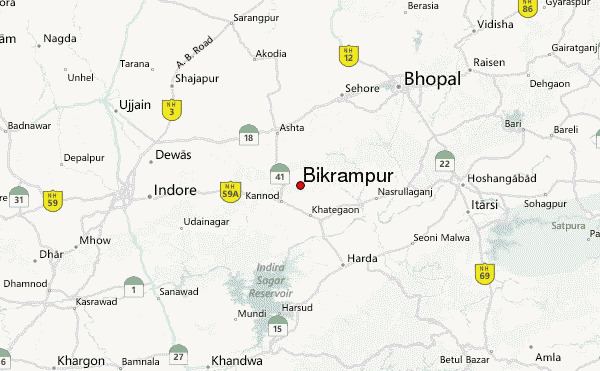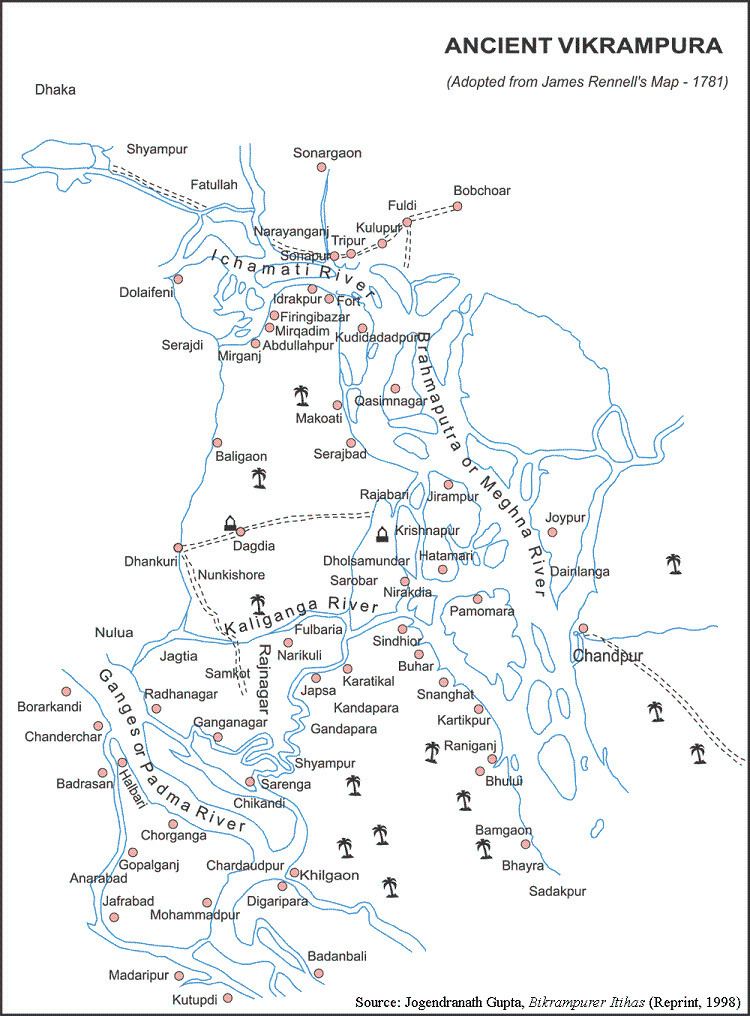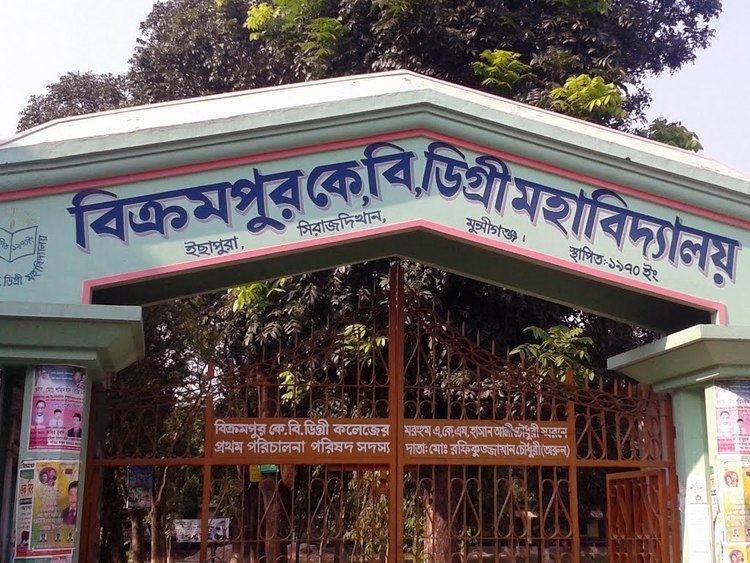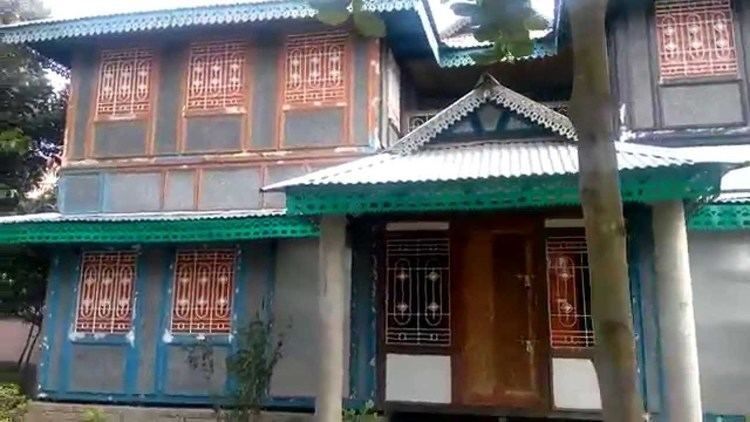 | ||
Munshigonj bikrampur bangladesh 02
Bikrampur ("City of Courage") is a pargana situated 12 miles (19 km) south of Dhaka, the modern capital city of Bangladesh. It lies in the Munshiganj District of Bangladesh. It is a historic region in Bengal. The region is famous for its early Buddhist scholarship and in the later period for its cultural influences.
Contents
- Munshigonj bikrampur bangladesh 02
- oisshorjya bikrampur
- Area
- Early history
- Pala Era
- Chandra Era
- Sen Era
- Mughal Era
- Prominent people from Bikrampur
- References

oisshorjya bikrampur
Area

Today there is no official recognition of Bikrampur area. People from an extensive region of the Munshiganj District claim as to be residents of Bikrampur. Roughly the town comprised the area with the river Padma on the west, the Dhaleshwari River on the north and east, and the confluence of the Arial Kha river and the Meghna River on the south.
According to a map from 1781, the Kaliganga River ran through the middle of the region creating the two parts - Uttara (North) Bikramapur and Daksina (South) Bikramapur. It stretched 30 to 40 miles from east to west and about 8 to 10 miles from north to south.

Bikrampur proper, referring to the town and historic urban center with historic antecedents and not the rural hinterland of Munshiganj, is reportedly well on its way to being destroyed due to river erosion. It should be noted this is a common theme in Bengal historically due to the changing courses of rivers over time.
Early history

Ashoka, the emperor of the Maurya Dynasty, ruled almost all of the Indian subcontinent from ca. 269 BC to 232 BC. Being a devotee of Gautama Buddha, he propagated Buddhism across his kingdom which included Bikrampur to the east. Following the high ideals of this religion, Pala Kings came to Bikrampur to rule the region.
Pala Era

The second ruler of Pala Empire, Dharmapal, built a Buddhist monastery in Bikrampur during his reign in 770-810. After his death, his son, Devapala ruled this area until 850 CE. Then the region is successively ruled by Vigrahapala I, Narayanapala, Rajyapala, Gopala II, Vigrahapala II, Mahipala, Naya Pala, Vigrahapala III, Mahipala II, Shurapala II, Ramapala, Kumarapala, Gopala III and Madanapala. Pala empire disintegrated in 1174 weakened by attacks of the Sena dynasty.
Chandra Era

During the rule of Srichandra (reigned 930 - 975 AD), the administrative centre of the Chandra kingdom was established at Bikrampur.
Sen Era

A copper-plate inscription from the time of the ruler Vijay Sen (ruled 1097-1160), founder of Sen dynasty, was found in Barrackpore, India in 1911. In this inscription, Bikrampur was mentioned as the capital of that region. It continued to be the capital throughout the, Sena Dynasty. In 1205, Turkic invader Bakhtiyar Khalji defeated the then-ruler Lakshman Sen in Nadia. Lakshman fled to Bikrampur. His two sons Vishwarup Sen and Keshab Sen kept ruling from here until 1230. But the copper-plate inscriptions during their reign do not mention Bikrampur as the capital. Another Hindu ruler, Danuj Rai, defeated a successor of Keshab Sen and started ruling from here. In early 1280 he moved the capital to Suvarnagrama (later named Sonargaon).
Mughal Era
During the administrative reforms of 1572-1580, Emperor Akbar designated Bikrampur as one of the 52 parganas within the Sonargaon sarkar of the Bengal subah. At this time, Chand Rai and Kedar Rai served as the Zamindars of Bikramapur. In the early 1600s, during the Mughal campaigns against the Bara-Bhuiyans, Mughal Subahdar Man Singh killed Kedar Rai.
In post-Aurangzeb era, during the time of Nawab Murshid Quli Khan, Bikrampur was divided into eight taluks - Bhagyakul, Sreenagar, Maijpara, Sinhapara, Taltala, Sirajdikhan, Louhojong and Baligaon. Each taluk was represented by one Zamindar. Muhammad Azim Khan became the Zamindar of Louhajong. Gobinda Prasad Roy became the Zamindar of Maijpara. maijpara Zamindar had three sons ramashankar, chandrashekar, ramkrishna. After that the region of Maijpara was ruled by ramakishore, son of Ramahari, who is son of ramashankar. Rama kishore's son was hari kishore, the next zamindar of Maijpara. Hari kishore had four sons: one of them was Annada kishore who continued the legacy of Zamindari. Then sons of Annada kishore were in part of this system hemada kishore. The family is now in India. Last trace was in Shillong,India.
